When you think of rugs, what comes to mind? For many, it’s the classic image of Iranian rugs. These rugs are a mark of sophistication, quality, and culture. They weave a tale of Iranian heritage into the fabric of your living spaces.
From its inception, an Iranian rug is a masterpiece. Craftspeople use traditional techniques, which they pass down generations. This craft creates intricate designs and patterns that set these rugs apart. Moreover, natural fibers like silk and wool are meticulously handwoven into the rug. The outcome? A product that’s durable and soft, providing a comfortable feel underfoot.
But the magic of Iranian rugs goes beyond their build. Each rug is unique, telling its own story through colors and motifs. Some depict historical events, while others showcase beautiful geometric patterns. What’s more, the bright colors used in these rugs are not only aesthetically pleasing but also hold symbolic meanings in Iranian culture.
In this article, we will journey through the world of Iranian rugs. We’ll touch upon their history, significance of colors, and how to choose and care for one. At Faber Rug Co., we have been offering quality rugs since 1954. Our aim is to help you understand the allure of these rugs and guide you in finding the perfect piece for your home. Welcome to the world of Iranian rugs! Let’s embark on this exciting journey.
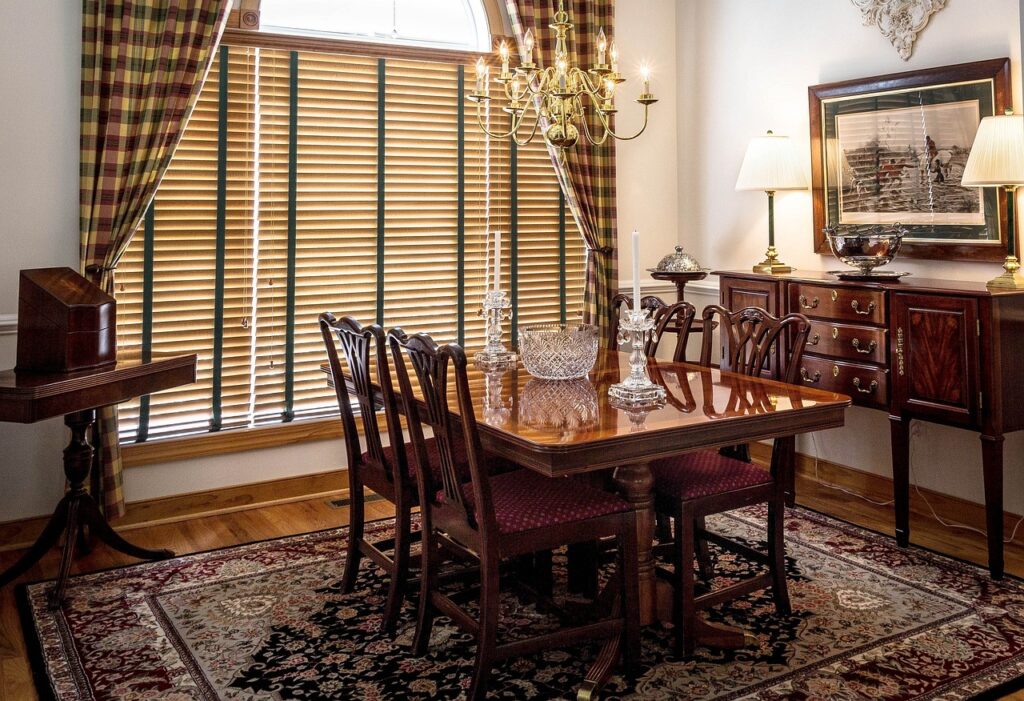
Iranian rugs, often known as Persian rugs, are the epitome of meticulous craftsmanship. These beautiful pieces often boast intricate designs that tell tales from ancient Persian culture, including myths, legends, and even significant historical events. The diversity in the design patterns is a reflection of Iran’s diverse cultural landscape.
Iranian rugs have a rich history, dating back over 2,500 years. This craft is a vital part of Iranian culture. First of all, the rug-making skills pass from generation to generation. This tradition helps to preserve the rich heritage of the art form.
In the old days, each region in Iran had its own unique style of rug. These regional styles, also known as village or tribal rugs, are a reflection of the local culture. They showcase the rich diversity of Iranian art and craft.
But what’s more interesting is the story behind each rug. Every pattern, every color, every knot has a meaning. The rugs tell stories of historical events, local folklore, or simply reflect the weaver’s emotions. This makes every rug a unique piece of art.
As a result, Iranian rugs are not just decorative items. They are a piece of history, a testament to Iran’s rich cultural heritage. Owning an Iranian rug means owning a piece of this timeless tradition. It’s an investment that will enhance the beauty and elegance of your home.
An Iranian rug isn’t just a home accessory. It’s a symbol of painstaking dedication and skill passed down generations. The traditional rug weaving techniques, which are still in use today, have stood the test of time.
One of the most striking aspects of Iranian rugs is their design diversity. Each region of Iran produces rugs with distinctive patterns and motifs. These could range from geometric shapes to complex floral designs, each telling a unique story.
In an Iranian rug, symbols and motifs are more than decorative elements. They often have deep cultural or religious significance. For example, a tree could represent life and fertility, while a bird might symbolize happiness and joy.
Iranian rug makers traditionally use natural fibers like wool and silk, which contribute to the durability of the rugs. Natural dyes derived from plants and insects are used to create a vibrant array of colors.
In conclusion, the art of Iranian rug making is an intricate blend of tradition, skill, and symbolism. These rugs are not just decorative pieces, but a testament to a rich cultural heritage. At Faber Rug Co., we take pride in offering such works of art that add warmth and character to your living spaces. So, why not add an Iranian rug to your home and become part of this beautiful legacy?
In Iranian rugs, colors are not merely aesthetic choices. They carry a profound significance rooted in Persian culture and history, adding layers of meaning to these works of art.
Often, you’ll see red prominently in Iranian rugs. This color symbolizes courage, force, and vitality. A rug with plenty of red might evoke feelings of warmth and energy.
Blue, another frequent color, represents peace and solitude. In Persian mythology, it’s also linked to the heavens and the afterlife. A rug with blue shades can create a calming and relaxing atmosphere.
Green, the color of nature, signifies renewal and growth. It’s also an important color in Islam, symbolizing paradise. Iranian rugs with green elements might bring a sense of harmony and freshness.
Yellow, a symbol of the sun, represents wealth, power, and sometimes caution. Including yellow in a rug’s design can provide a bright and uplifting touch to the room.
Beige is often used as a neutral backdrop in Iranian rugs. It allows other colors and patterns to stand out. A beige rug can add a sophisticated and understated elegance to your living space.
In conclusion, the colors used in Iranian rugs go beyond aesthetics. They weave a colorful tapestry of cultural symbols and meanings, making each rug a vibrant piece of Persian history. At Faber Rug Co., we appreciate the intricate artistry of these rugs and hope this insight into their color symbolism enhances your appreciation too. Next time you choose an Iranian rug, remember, you’re not just selecting colors, but also embracing rich cultural narratives.
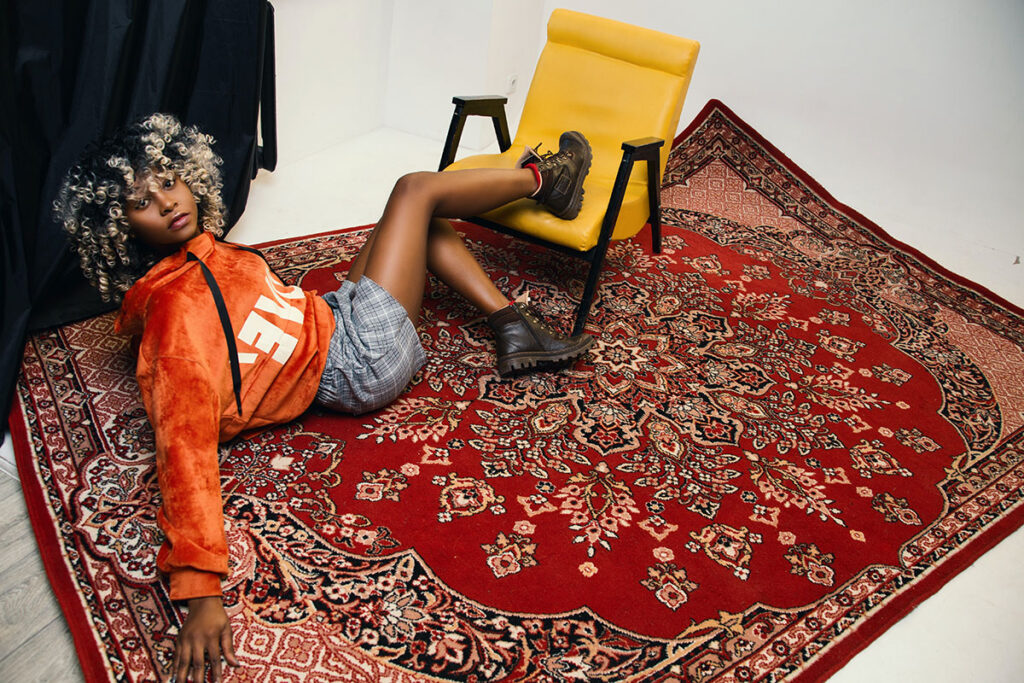
When you invest in an Iranian rug, you’re not just buying a decorative piece. You’re investing in a piece of art with a rich cultural heritage. Furthermore, their high-quality natural fibers ensure durability, promising a lifelong companion for your home decor.
Investing in an Iranian rug is a decision you’ll never regret. Not only do these rugs enhance your home’s aesthetics, but they also offer a value that goes beyond their initial price tag.
First, an Iranian rug is a piece of timeless art. Crafted by skilled artisans, every knot and weave is a testament to centuries-old traditions. This unique craftsmanship contributes significantly to their enduring value.
Next, the use of high-quality materials, typically wool or silk, ensures durability. An Iranian rug is built to last, often becoming a cherished heirloom passed down through generations.
Furthermore, due to their intricate designs and cultural significance, Iranian rugs maintain a strong demand in the global market. Over time, they often appreciate in value, becoming a worthwhile investment.
However, the most valuable aspect of owning an Iranian rug is its ability to transform a space. Its rich colors and detailed patterns can serve as a room’s focal point, bringing warmth and character to any setting.
In conclusion, investing in an Iranian rug is more than just buying a piece of décor. It’s about owning a piece of history, art, and tradition that will never go out of style.
Authentic Iranian rugs are handwoven, each knot carefully tied by skilled artisans. This dedication to craftsmanship ensures that no two rugs are the same, adding to their unique value.
Iranian rugs are known for their exceptional durability. Made from quality materials like wool or silk, these rugs can last for decades, if not centuries, when properly cared for.
Iranian rugs, like fine wines, tend to increase in value over time. This appreciation is due in part to the dwindling number of traditional rug weavers, making these rugs rarer and more valuable.
The captivating designs and rich colors of Iranian rugs can enhance any living space. Whether used as a statement piece or to complement existing decor, these rugs add a touch of elegance and warmth.
In conclusion, investing in an Iranian rug means investing in an item of enduring beauty and rich cultural heritage. At Faber Rug Co., we understand the value of these magnificent rugs and are here to guide you in choosing the perfect piece. When you invest in an Iranian rug, you bring a piece of history into your home and make a worthwhile addition to your collection. The world of Iranian rugs is one filled with color, history, and craftsmanship – a world worth exploring and investing in.
Proper care of your Iranian rug is essential to preserve its beauty and longevity. Routine cleaning and occasional professional maintenance can ensure your cherished rug stays vibrant and sturdy for years to come.
Caring for an Iranian rug is an essential part of ensuring its long-lasting beauty and value. Let’s look at some key practices that can keep your rug in pristine condition.
Regular cleaning is paramount. Vacuum your rug frequently, but avoid using the beater bar. This keeps the dirt from settling in and damaging the fibers.
If a spill occurs, act promptly. Use a clean, dry cloth to blot—never rub—the spill. This prevents staining and avoids damaging the fibers.
Despite regular home care, professional cleaning every 3-5 years is crucial. Professionals possess the right knowledge and equipment to clean your rug without causing damage.
Rotate your rug every few months. This ensures even wear and prevents the rug’s colors from fading due to consistent exposure to sunlight.
If you need to store your rug, roll it up—don’t fold it—to avoid creases. Keep it in a dry, cool place, ideally wrapped in breathable fabric.
Caring for your Iranian rug is all about preserving its beauty and prolonging its life. By practicing regular cleaning, responding quickly to spills, and seeking professional care, you can ensure your piece of history stays stunning for generations. Here at Faber Rug Co., we’re always ready to offer our expertise and assistance in caring for your cherished rug. Remember, a well-cared-for Iranian rug can tell its vibrant stories for centuries.
Investing in an Iranian rug means you’re embracing a vibrant, centuries-old art form. It’s not just about owning a beautiful decor piece. Instead, it’s about becoming a part of a rich, cultural tapestry. In fact, every Iranian rug tells its own unique story.
Moreover, the durability of Iranian rugs is something to admire. Carefully handcrafted using traditional methods, these rugs promise a long lifespan. Not to mention, the quality of materials used, like wool and silk, only add to their strength and comfort.
Proper care plays a key role in maintaining the beauty of your rug. Regular cleaning and occasional professional attention help preserve its original condition.
Finally, the radiant colors and intricate patterns of Iranian rugs can transform any living space. They add a touch of warmth, elegance, and sophistication. Whether you place it in your living room or study, the rug serves as a stunning focal point.
To conclude, an Iranian rug is more than just a decorative item. It’s a piece of history, a work of art, and a testament to exceptional craftsmanship. It’s an investment that offers both aesthetic appeal and tangible value. So, if you haven’t considered it yet, maybe it’s time to let the allure of Iranian rugs grace your home. Remember, at Faber Rug Co., we are here to guide you through your rug selection journey, ensuring you choose a piece that perfectly complements your style and meets our quality standards.
Welcome to another engaging journey with us at Faber Rug Co., your trusted partner in rugs since 1954. Today, we invite you to explore the enchanting universe of colorful Persian rugs. The stunning weave of colors and designs in Persian rugs has the ability to transform any space into a visual spectacle.
Each colorful Persian rug is a canvas painted by a skilled artisan. It’s where shades of blues, reds, greens, yellows, and more come to life, creating unique stories and magical scenes. The wonderful thing about these rugs is that they fit into diverse decor styles, enhancing the overall aesthetics of a space. They can be your room’s showstopper, lending a vibrant, dynamic touch that speaks volumes about your unique taste.
Persian rugs are renowned worldwide for their exceptional quality and craftsmanship. These rugs are made with meticulous precision and devotion, with each knot woven by hand. The result? A durable, high-quality piece of art that not only beautifies your room but also stands the test of time. The colorful patterns are often derived from natural dyes, which give the rugs a unique, rich tone that is hard to replicate.
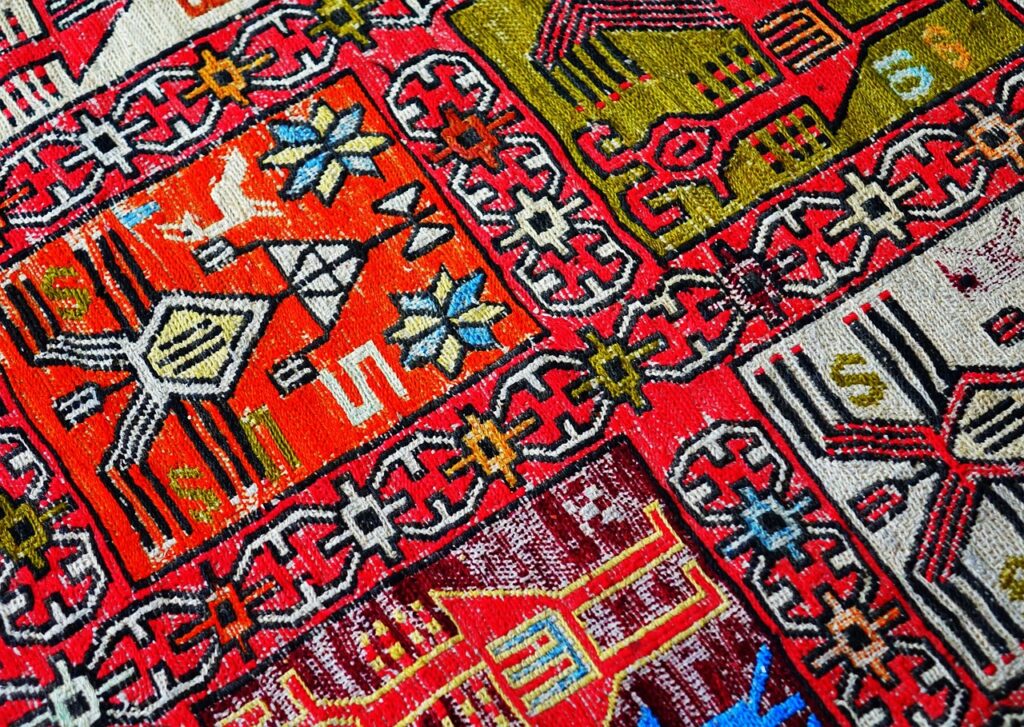
Choosing the perfect colorful Persian rug may seem daunting. However, by keeping some factors in mind, the process can be made simpler. Consider the size of the rug that would best suit your space, the existing color scheme of the room, and the rug’s design and pattern. A rug should not only match your room’s aesthetics but also reflect your personality.
Even though Persian rugs are known for their durability, proper care and maintenance are essential. Regular cleaning, timely stain removal, and periodic professional cleaning can help retain the rug’s vibrant colors and increase its lifespan.
Colorful Persian rugs are more than just floor coverings; they are expressions of art and fragments of history. They invite you into a world of vibrant beauty and intricate design, where each color and pattern tell a story.
The charm of a colorful Persian rug lies not only in its vibrant hues but also in the story each pattern tells. Persian rug artisans use color in a way that conveys history, artistry, and emotion, making each rug a unique piece of art.
Most colorful Persian rugs exhibit a palette brimming with deep reds, rich blues, and warm yellows. These colors, often combined with intricate patterns, can transform any space into a vibrant, welcoming environment. Remember, when choosing a rug, consider how its colors will complement or contrast with your existing decor.
Beyond color, the detailed patterns found in Persian rugs add to their allure. Each design element, be it a flower, a bird, or geometric shapes, holds a significant meaning in Persian culture. Understanding these symbols can enrich your appreciation for your rug.
When decorating a room, it’s crucial to have a focal point. A well-chosen rug can serve this purpose effectively. Let’s delve into creating a stunning focal point with your rug.
Start by picking a rug that complements your room’s overall decor. But make sure it stands out. An eye-catching pattern or a vibrant color can do the trick. This will naturally draw the eye, making the rug the center of attention.
Once you’ve chosen the perfect rug, it’s time to place it. Position the rug in the center of the room or area. This helps to anchor the space, making your rug the undeniable star.
Next, arrange your furniture around the rug. In a living room, for instance, you could place a coffee table on the rug, and arrange the sofas around it. This will further highlight the rug.
Lastly, balance is key. Make sure the rest of the room supports the rug as the focal point, without competing with it.
So, with these simple steps, you can transform your chosen rug into a captivating focal point. Go ahead, let your rug steal the show!
Don’t be afraid to mix and match! A colorful Persian rug can work with a variety of decor styles, from traditional to contemporary. They can pair well with neutral furniture or even with other vibrant decor elements for a more eclectic look.
In conclusion, a colorful Persian rug can bring life, warmth, and charm to your space. It’s more than just a floor covering; it’s a piece of art, a piece of history, and a statement of style. So why wait? Start your journey with a colorful Persian rug today and let it transform your space into a vibrant, welcoming haven. At Faber Rug Co., we’re here to help you every step of the way.
Colorful Persian rugs are admired globally for their exceptional quality and craftsmanship. Let’s delve deeper into these attributes that make them so cherished.
Persian rugs are handcrafted by skilled artisans who have inherited their rug-making knowledge over generations. Each colorful Persian rug represents countless hours of labor and expertise. It’s not just a rug, it’s a testament to the artisans’ dedication.
These rugs are made from high-quality materials, usually wool or silk, or a combination of both. These natural fibers ensure the rug’s durability while also adding a luxurious feel underfoot.
The vibrant colors of Persian rugs are achieved through a careful dyeing process. Artisans use natural dyes derived from plants and insects, resulting in stunning, long-lasting hues.
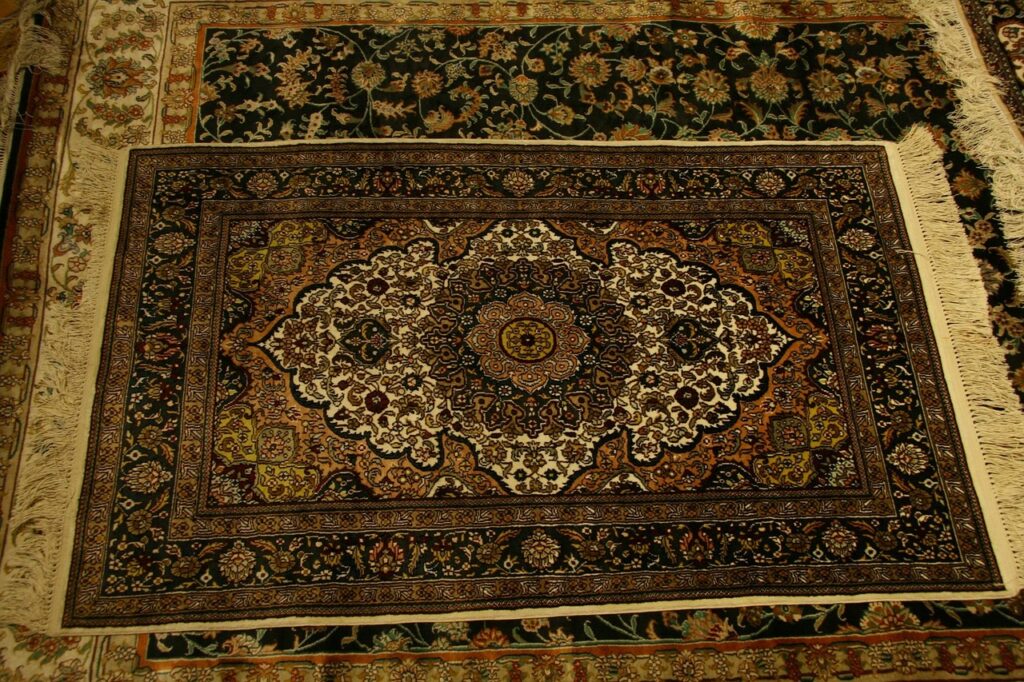
A well-made Persian rug is incredibly durable. With proper care, it can last for several generations, often becoming a cherished family heirloom.
The quality of a Persian rug can also be determined by its knot density – the number of knots per square inch. The greater the density, the finer the rug.
In conclusion, the quality and craftsmanship of colorful Persian rugs are truly exceptional. They are a representation of generations of skill, artistry, and cultural heritage. Owning a Persian rug means appreciating and preserving this timeless craft.
At Faber Rug Co., we believe in promoting this rich tradition. We’re here to help you choose the perfect rug that aligns with your aesthetic and our quality standards. Let a colorful Persian rug be the artistic centerpiece that adds a burst of charm and history to your home.
Caring for your colorful Persian rug involves a few simple, yet important steps. Proper maintenance will ensure your rug retains its beauty and lasts for generations to come.
Let’s discuss an essential part of rug ownership: regular cleaning. With consistent care, your rug will retain its vibrancy and charm for years to come.
Start by setting a cleaning schedule. Regularly vacuum your rug at least once a week. This removes everyday dirt and debris, maintaining your rug’s fresh appearance.
Next, don’t forget to rotate your rug periodically. This helps in even distribution of foot traffic and sunlight, which can fade the rug’s colors over time.
Address spills quickly. In the event of a spill, blot it gently with a clean, absorbent cloth. Avoid rubbing the spill, as this can set the stain and damage the rug fibers.
Lastly, consider a professional rug cleaning every one to two years. Professional cleaners have specialized equipment and expertise to deep clean your rug without causing damage.
Remember, regular cleaning isn’t just about appearance. It also maintains the quality and longevity of your rug, allowing you to enjoy its beauty for longer. With proper and regular care, your rug will continue to shine, adding warmth and character to your home.
Spills should be handled immediately to prevent staining. Blot the spill gently with a clean, dry cloth without rubbing.
While regular home cleaning is essential, professional cleaning is equally important for your colorful Persian rug’s upkeep. Professional cleaning reaches beyond your regular vacuum and spot-cleaning regime.
Think of it like a deep cleansing session for your rug. This process penetrates the fibers, removing deep-set dirt and reviving the vibrancy of your rug’s colors. It can also help to alleviate any allergies triggered by dust and pet dander caught in the rug.
Aim for a professional cleaning every 12 to 18 months. However, if your rug experiences heavy foot traffic or if you have pets, you may need more frequent cleanings.
Don’t just choose any cleaning service. Ensure your chosen professionals have experience with Persian rugs. These rugs require specific care due to their intricate designs and natural fibers.
Remember, a well-maintained Persian rug not only looks good but also lasts longer. Let the pros at Faber Rug Co. guide you on your journey towards maintaining the luster and life of your rug. We promise it’s worth the effort!
Colorful Persian rugs should be kept out of direct sunlight to prevent fading. Use curtains or blinds to protect your rug during peak sunlight hours.
To ensure even wear, rotate your rug every six months. This helps prevent uneven fading and wear from foot traffic.
A rug pad provides extra cushioning, reduces slippage, and helps prevent dirt accumulation.
Caring for a colorful Persian rug doesn’t have to be a daunting task. With a little bit of routine care and attention, your rug can continue to bring joy and beauty into your home for many years.
Remember, at Faber Rug Co., we’re here to provide guidance on maintaining your Persian rug. We believe that a well-cared-for rug can be a cherished possession that endures, offering an inviting touch of color and warmth to your home. So, let’s embrace the charm of a colorful Persian rug and ensure it gets the care it deserves.
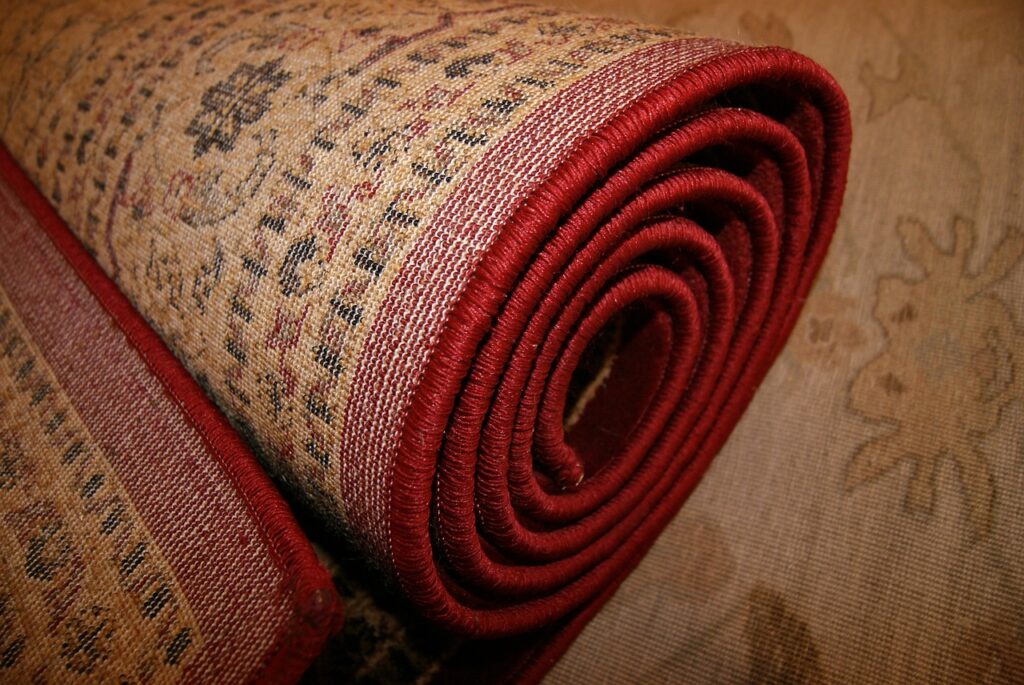
We’ve journeyed through the fascinating world of colorful Persian rugs together. From understanding their charm and impact in transforming spaces, to appreciating their quality and craftsmanship, and finally, exploring the best ways to care for these beauties.
Colorful Persian rugs are not just home décor. They are pieces of history, timeless art, and culture wrapped in vibrant hues. Each rug tells a story, its patterns and colors unveiling tales from its weaver’s heart, giving your space a unique personality.
Remember, it’s not just about having a rug; it’s about having the right rug. A colorful Persian rug should blend with your style and the overall vibe of your home. When chosen wisely, it becomes more than a floor covering. It becomes a statement piece, setting the tone for your room’s décor and sparking conversations.
It’s hard not to fall in love with these rugs, given their rich heritage, stunning designs, and the pop of color they bring. They’re an investment in beauty, quality, and cultural history, and they bring a piece of the wider world right into your home.
At Faber Rug Co., we’re proud to offer you a wide selection of these beautiful, colorful Persian rugs. We’re here to guide you, share our expertise, and help you find a rug that you’ll cherish for years to come. Remember, we’re not just selling rugs. We’re helping you make your space feel like home.
In conclusion, whether you’re looking for a rug that quietly complements your current décor, or a bold, colorful Persian rug that steals the show, remember to choose with your heart. After all, the best rug is one that you love today and will continue to adore in years to come. So, why wait? Bring the magic of colorful Persian rugs to your home. Embark on this exciting journey with us and let’s create beautiful spaces together.
Dear readers, we’re thrilled to welcome you back to another exciting edition of our Faber Rug Co. blog. Today, we’ve embarked on a unique mission – to explore the allure and elegance of oriental rugs in the bedroom. As experts in the field since 1954, we’ve seen the transformative power of these beautiful rugs firsthand, and we’re excited to share our knowledge with you.
Oriental rugs, for those of you who might be new to the term, are a type of rug that originated in countries like Iran, China, India, Russia, Turkey, Pakistan, Tibet, and Nepal. They’re renowned globally for their rich history, intricate designs, and exceptional craftsmanship. Each rug tells a unique story, often portraying elements from the culture, mythology, or nature of its place of origin.

Moving on, why talk about oriental rugs in the bedroom? The answer is simple: bedrooms are personal sanctuaries. They’re not just spaces for rest but also reflection and rejuvenation. An oriental rug, with its distinct charm and character, adds a special touch to this intimate space. It infuses color, warmth, and a unique sense of identity, enhancing the room’s overall ambiance.
But here’s the thing: choosing an oriental rug for your bedroom isn’t as straightforward as picking one that catches your eye. There are various factors to consider, from the rug’s size and color to its design, material, and even how you position it in the room. Moreover, an oriental rug is an investment that you’d want to last for years while retaining its beauty and charm. It requires proper care and maintenance, another crucial aspect we’ll delve into.
As we set off on this journey of unraveling the mystery and magic of oriental rugs in the bedroom, we invite you to join us. Bring your curiosity, questions, and love for beautiful homes. Let’s explore, learn, and grow together in this wonderful world of oriental rugs.
Congratulations on welcoming the timeless beauty of an oriental rug into your bedroom. As we examine deeper into the selection process, remember that this journey, just like the rug’s creation, should be unhurried and savored.
Before setting foot into the fascinating world of oriental rugs, take a moment to study your bedroom. Please consider its size, layout, color scheme, and overall decor style. This understanding will provide a solid foundation to base your rug choices.
Arguably, determining the appropriate size is one of the most crucial aspects of rug selection. An oriental rug that’s too small might get lost in your bedroom, while one that’s overly large can overwhelm the space. Consider the size of your bed, the floor space you wish to cover, and the furniture arrangement in your room.
You might choose a large rug that sits under your bed and extends generously around it for a more traditional look. Alternatively, a smaller rug placed at the foot of the bed could be a stylish choice for a contemporary feel. Remember, there’s no one-size-fits-all solution. The best rug for your bedroom resonates with your style and the room’s requirements.
Next up is the fun part – choosing the color of your oriental rug. This decision largely hinges on the existing color palette of your bedroom. An oriental rug can serve two purposes. It can either harmonize with the room’s existing colors, creating a soothing, unified look, or it can add a pop of contrasting color, injecting energy and drama into the space.
While choosing the rug’s color, think about the mood you want to create in your bedroom. Soft, muted colors create a calm and serene ambiance, while bold, vibrant colors can make a statement and energize the room.
Finally, let’s talk about design. Oriental rugs come in many patterns, from geometric to floral, and each has a unique charm. The choice here again rests on the existing decor in your room. A room with minimalist decor might benefit from an intricately designed rug, while a room that’s already rich in pattern might need a simpler rug design.
In essence, selecting an oriental rug for your bedroom balances practical considerations with personal aesthetics. It’s about understanding your space and how a rug can enhance it. But above all, it’s about trusting your instincts and choosing a rug that you love, a rug that tells a story, and a rug that makes your bedroom feel like home. We hope your rug selection journey will be enjoyable and fruitful with these guidelines. And remember, at Faber Rug Co., we’re here to help you every step of the way.
Today, we step into the heart of what makes oriental rugs truly special: their exquisite quality. A glance at one of these rugs instantly reveals the masterful craftsmanship that goes into each piece.
The story of oriental rugs is a tale steeped in tradition. These rugs originate from regions known for their rich weaving history, each carrying a piece of this heritage within its threads. They are handcrafted, often taking several months, or even years, to complete. The result is an item of timeless beauty, reflecting an art form that has been perfected over centuries and can last for centuries more.
Every design element in an oriental rug, from the grandest pattern to the smallest detail, is meticulously planned and executed. The weavers pour their creativity and skill into every knot, creating intricate designs and motifs. Each design often signifies a cultural or natural symbol, contributing to the unique narrative of each rug.
Regarding materials, oriental rugs are usually made of high-quality wool, silk, or both. Using these natural fibers ensures the rug’s durability and gives it a plush, luxurious feel underfoot. Silk rugs, particularly, are renowned for their lustrous sheen and intricate detailing.
The vibrant colors of oriental rugs are another testament to their quality. Traditional oriental rugs are dyed using natural sources like plants and minerals. This process results in a rich, deep color palette that stands the test of time, even with years of use.
One crucial aspect of an oriental rug’s quality lies in its longevity. A well-made oriental rug isn’t just a beautiful addition to your bedroom; it’s a long-lasting investment. With proper care, these rugs can last for generations, their charm only deepening with age.
The exquisite quality of oriental rugs is a culmination of skilled craftsmanship, authentic materials, vibrant colors, and impressive durability. These rugs bring a unique combination of art and function into your bedroom, creating a space that reflects your appreciation for fine craftsmanship and timeless beauty. As we end today’s journey into the world of oriental rugs, we hope you feel more connected with these remarkable pieces of art. And remember, our team at Faber Rug Co. is here to help you find the perfect oriental rug that matches your style and meets our high-quality standards.
As we continue our journey into the enchanting world of oriental rugs, let’s focus on an aspect that ensures their lasting charm – proper care and maintenance. After all, these rugs are more than just decorative pieces; they are timeless investments deserving of the utmost care.
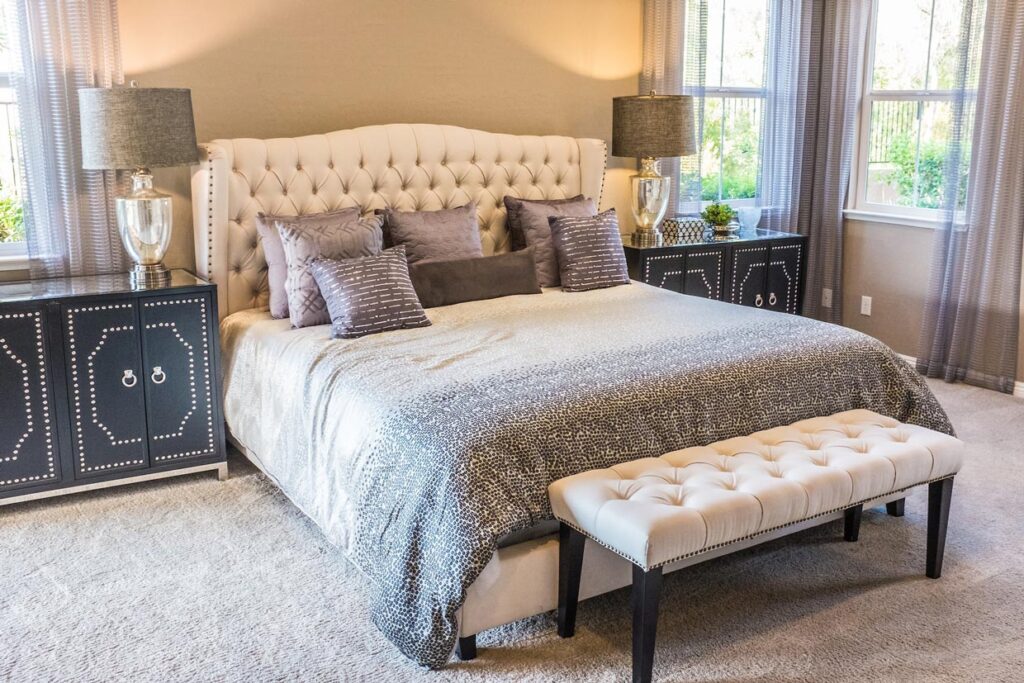
The most basic step in maintaining your oriental rug’s beauty is regular cleaning. This doesn’t require any elaborate methods. A simple routine of weekly vacuuming, using a low suction setting, is often enough to remove dust and keep your rug looking fresh. But remember, always avoid vacuuming the rug’s fringe as it can damage delicate fibers.
Despite regular vacuuming, your oriental rug may need occasional deep cleaning. However, given the delicacy of these rugs, this isn’t a job for your standard home carpet cleaner. We recommend using professional cleaning services that understand the intricacies of oriental rugs and can tailor the cleaning process to your rug’s specific needs. Faber’s can point you in the right direction.
Accidental spills are inevitable. When they occur, it’s crucial to act quickly. Gently blot the spill with a clean, dry cloth, ensuring not to rub or scrub, as this can damage the rug fibers and set the stain. For stubborn stains, consider seeking professional help to avoid causing any irreversible damage. Faber’s carries wonderful spot cleaners, just ask!
While natural light can enhance the beauty of your oriental rug, prolonged direct sunlight can cause its vibrant colors to fade over time. Try to position your rug in a way that avoids consistent direct sunlight. If this isn’t possible, using blinds or curtains during peak sunlight can help protect your rug.
Another simple yet effective tip for prolonging your oriental rug’s lifespan is regular rotation. By rotating your rug every six months, you can ensure it wears evenly over time, maintaining a consistent appearance.
Lastly, consider using a rug pad. It not only provides additional comfort and prevents slipping but also offers an extra layer of protection against wear and tear, helping to extend your rug’s lifespan.
Taking care of your oriental rug isn’t a tedious chore; rather, it’s a labor of love. With regular cleaning, mindful handling, and the right protective measures, your rug will beautify your bedroom for years, even generations. Remember, every well-preserved oriental rug carries a story that grows richer with each passing day. At Faber Rug Co., we’re always ready to assist you in ensuring your rug’s story continues beautifully and enduringly.
We dive into a pivotal yet frequently overlooked aspect of enhancing your bedroom with an oriental rug: its positioning. Placing your rug can significantly influence the room’s aesthetics and functionality. Direction matters too. Due to the nap of the rug colors appear differently. One direction may look bright and vibrant while the other direction may look darker and less colorful.
When it comes to oriental rugs, there are several positioning options. For a classic touch, consider placing the rug under the bed. This allows the rug to extend beyond the bed, adding a layer of warmth and color.
Alternatively, you may place a smaller rug at the foot or side of the bed. It works particularly well in larger bedrooms, adding a splash of color without overwhelming the space.
The rug’s placement should also take into account practical considerations. If you prefer stepping onto a soft surface when getting out of bed, position the rug so it extends at least 24 inches on either side of the bed.
Ensure that the rug doesn’t become a tripping hazard. In high-traffic areas, secure it with a rug pad.
Regardless of your chosen positioning, the goal should be harmony and balance. The rug should complement your bedroom’s decor, adding to its aesthetic appeal without disrupting the flow.
In conclusion, positioning your oriental rug is an art form that marries aesthetics and functionality. We hope these tips will guide you in creating a bedroom space that is visually appealing, comfortable, and inviting. As always, our team at Faber Rug Co. is here to provide expert advice, ensuring you make the most of your beautiful oriental rug.
So, dear readers, here we are at the end of this delightful journey. We’ve traversed the enchanting world of oriental rugs, embracing their remarkable potential to grace your bedroom with a touch of elegance and warmth.
Throughout our voyage, we’ve admired these art pieces’ exquisite quality and learned how to preserve their beauty and longevity. We’ve underscored the importance of regular cleaning, quick response to spills, mindful sun exposure, and other care considerations.
Beyond maintenance, we’ve also ventured into the realm of rug placement. We’ve recognized how this often underplayed aspect can significantly influence your room’s aesthetic appeal and functionality.
From understanding your space to exploring the vibrant world of color palettes and intricate designs, we hope these insights inspire you to introduce the magic of oriental rugs into your sanctuary. But remember, there are no rigid rules. The beauty of decorating with oriental rugs lies in their flexibility – it’s all about what speaks to your heart and resonates with your style.
Finally, our oriental rug journey wouldn’t be complete without mentioning our team at Faber Rug Co. We’ve been guiding rug enthusiasts since 1954, and we’re here to help you transform your oriental rug bedroom dreams into a reality. So let the allure of oriental rugs captivate you, and embark on this exciting journey with us. Your perfect oriental rug bedroom is just a decision away.
Although there are thousands of different rug styles in the shop, a person, business, corporation, or anyone else may need a completely different type of rug to lay on their floor. It may include several unique ideas of a person or some people. On such occasions, Faber Rug has custom rugs are exactly what you can think of. There will be many reasons why they need that kind of rug for their place. We have understood and explained them below to let our customers know, we will be with you on the following necessities.
There is no wonder that a rug allows you to update and easily transform floors and interiors. Professional interior designers had always been incorporating rugs to magically transform your living spaces. Interior designers often start their design projects by considering in-room furniture along with the type of rugs that they can lay on the floor to enhance aesthetics.
Custom-made rugs give the buyer more options for modification than ready rugs. Some of the major reasons people buy custom-made rugs are;
When it comes to creating a unique interior design that is personalized to drive the feeling, identity, and idea you need, you must need custom carpets. In that case, Faber Rug provides you the freedom to choose the design, colors, patterns, and materials that match your taste and complement your existing decor. This level of personalization helps create a cohesive and visually appealing environment.
No wonder a custom-made rug perfectly fits your space because the rug is weaved according to the size and shape of the space. So you can ensure that it fits perfectly within the dimensions of your room. If you have an unusually shaped room or specific areas you want to cover, a custom rug can be tailor-made to meet your exact requirements. This helps create a polished and well-proportioned look.
Creating a custom rug has no boundaries. With unlimited design possibilities with various patterns, textures, and colors you can bring your creative vision to life. You have the freedom to experiment with them to achieve the desired aesthetic. This ensures a high-quality output that satisfies you, your business’ marketing purposes, and your customers in many ways.

Based on the above features of a custom rug, you can see a business or a person can print their unique image on the rug with any kind of design. It is an amazing opportunity for businesses for branding purposes. Making customers recognize your brand with colors, logos, and other materials is an important part when it comes to branding. Especially, you can let your walk-in customers see your logo in your hotel, shop, outlets, or anywhere that makes them remember the logo and colors when they see it among your competitors they can easily recognize you since they know the logo well. So, creating a custom rug with your logo is a great idea to build a strong brand. Along with them, the following are some of the other factors to have a custom logo rug in your space.
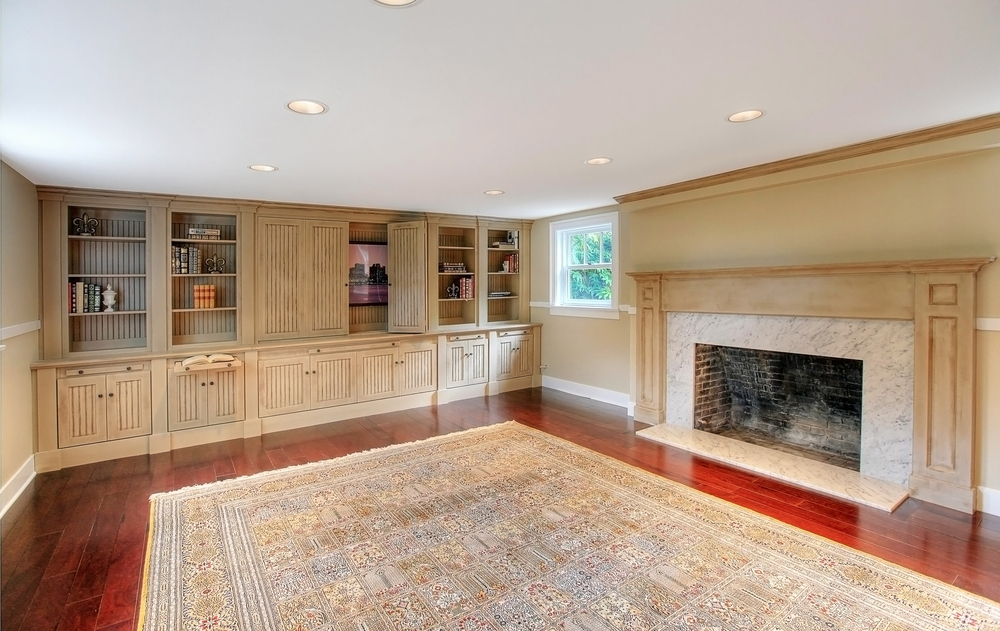
Custom rugs with logos make your business looks professional
Looking professional in business is more an art than a science. There’s only one solution to looking like you’re deserving of someone’s time, but there are some broad strokes solutions that tend to help. This is again where custom rugs shine. Rugs can work as a subtle complement to space. At the same time helping to nail down your logo in visitors’ minds.
Branded custom rugs with logos and brand colors can also create a sense of professionalism in the visitors. They show a company has invested in specialized furnishings, which can give off an aura of prestige.
While custom rugs help your brand to shine and derive professionalism, they are practical too. This means like all rugs, you can buy custom rugs that soften the hard floors, make the space soundproof with quieter footsteps, and much more to satisfy your customers.
We have made the process of creating a custom rug for a person or business more user-friendly. The process only includes 4 steps that don’t disturb your busy schedule. Following are those steps.
Step 1.
Submit a sketch with your design and colors.
Choose your exact color match by selecting from our color bank.
Faber’s can assist with your design, creating it from your fabric,
wallpaper, or photograph.
Step 2.
A sample, or strike-off, is created.
Step 3.
Approve your design/colors.
Step 4.
Complete your order.
By clicking here you can visit our custom rug page and see more information. Also, you can contact us anytime for more details.

Carpet construction includes a wide range of variations in many things including different kinds of fibers, colors, and textures. There are many factors of each one that helps for high-quality output. When it comes to creating a custom rug, only a reliable service provider may give you a premium output. Also, the service provider must have good connections with rug weavers for a better output that satisfies buyers. Faber Rug provides high-quality carpeting in New England, USA over the generations and we have been dealing with worldwide rug weavers for a long time. So, the direct relationship with them has built their loyalty in providing high-quality service for us and our customers. It ensures 100% quality output and we are responsible for your order. Also, we provide installation services for every custom carpet you buy from us and when we are installing, we will do everything including moving your furniture. Hurry Up! Contact us and place your order soon and take your business to the next level.
When hunting for area rugs in the market, you may have seen different types, sizes, and colors. Also, we have talked about selecting the best rugs depending on various aspects. However, here we managed to focus on the value of the beige rugs to to bring beauty to your home.
Typically, they are rugs that are pale brown. Some people don’t desire to buy them because the beige carpet looks stained and spotted. But, these light brown rugs complement many decorations. Add a soft brown carpet to your room to maintain a calm and serene space, or add color with cushions, beads, ruffles and other accessories.
When embellishing your space, you may be wondering what color rug to use with your light brown bed. Beige’s neutrality means it can go with light or dark colors.
So, thanks to their neutral and aggressive tones, your eyes feel comfortable and they look lovely with both the walls and the ceilings. Also, a tufted beige rug gives a refreshing feel to both the look and the soles of the feet, while a natural fibre beige rug maintains an eco-friendly feel, while a flat woven light brown rug blends in with the current Nordic look.
They usually fit nicely in front of furniture arranged in a circle, but you can place them halfway under the table legs. Knitted simple light brown rugs provide multifunctional positioning. This solid-color design will work best in rooms where you have patterned furniture.
Everything should be excellent in the living room since it makes your house’s first impression. However, like the couch, the main furniture should ideally match the beige tone. So, you have to select the best sofa on the market. What else?
Well. If you have already brought your couch, you can spend the time buying a rug. Choosing an area rug for a tan couch will not be difficult since it perfectly matches a dark brown carpet. However, reaching a rug also depends on whether you want a solid neutral shade mixed with light brown or a print with striking multi-color patterns.
Following are some tips to make it easy for you.
The brown/beige rug is machine-woven to ensure extra tightness until the last stitch. The soft texture combined with the sleek design of these beige abstract rugs creates a cosy look and blends seamlessly with your home decor to enhance the look of any room.
To find the right rug size, we recommend the following;
Living Room: Make a minimal ” border ‘between the rugs and the walls in your living room.
Dining Room: Choose a size that allows you to pull your chairs out when sitting at the table and still be on the rug. Broadloom can be cut to any size if you decide not to pick a oriental rug.
Bedroom: Depending on the size of your bed and the size of the room, we recommend placing your rug under the bed and falling just in front of your end tables. You want to have enough space to get out of bed and have your feet land on the bed.
Add a sense of wonder, interest and charm to your home and fall in love with your space. These vintage rugs will complete one missing piece you have been looking for endlessly.
A light brown living room is one of the most dreamed of luxury items in our homes. Nothing is better than a modern, elegantly faded look that retains its polish for everyday use. With unique designs, craftsmanship and styles of clothing that have been used for generations, beige rugs for the living room are far more than just your traditional home decor, depending on your space. Also, abstract rugs are soft, durable and stain-resistant. You can decide if your looking for basic tones and a simple stylish rug or something more extravagant and make a statement.
However, there are things that should be considered, especially when placing these types of rugs in your home.
If you have a rug or have another floor already installed, you will need to remove it before installing a new one. Some installers will provide this service for you, but again, for a small fee. Read our blog about the top methods on how to dispose of them for more information on proper rug removal and disposal. If you are removing it yourself, you should follow those steps in the previous blog.
When you buy a beige rug, it is important to do some background research. For example, you may want to know what type of vacuum is recommended to use and how often you should use it. Beige rugs and grey light brown rugs are usually light in color, so wine spills or even nose bleeds can easily stain and can be incredibly tricky to remove. For this reason alone, look for the best ways how to clean your carpet to enhance its aesthetics and durability.
Ventilation is key when installing new ones. Excess dust and fibres are floating around, which can adversely affect the quality of indoor air. Therefore, it is important to keep windows open for as long as you can during the installation process. If you have an AC unit, it is advisable to turn it on to help further airflow.
We have discussed different types of rugs in our recent blogs. However, it will be better to remind them again briefly since we need to consult the beautiful topic, Should a rug be lighter or darker than couch?
When choosing a rug, we should be concerned about the size, color, shape, and age. These rugs have different names, such as area rugs, carpets, Oriental rugs, Persian rugs, etc. However, every rug consists of a few parts as follows.
There are different types of fields, borders, and corners too. But, it is not worth talking about here since we are discussing a different topic. However, knowing about the parts of rugs will be worthier when studying this topic further.
However, I introduced the parts briefly since you need to think about the color of the different parts of the rug when selecting it.
Yeah, out of the different concerns mentioned above, color is the essential part of choosing a rug for anywhere. If you are wondering how to choose a rug color, you will have to consider the following aspects when buying a rug to pitch the right look.
According to the prefered vibe you need, select the medallion style and the field, whether it can be modern, traditional, dark, or something else. It is your taste. The border will also match then. I can recommend you to search on Pinterest by your desired style name+rugs. Go through the results and sharpen your desire.
Focus on the quality and the material.
Well, if you need to match your new rug perfectly with your space, be keen to study the colors, light, and patterns in your space. When it comes to selecting rugs for your living room, where many people and your guests first visit and are impressed, the procedure is complicated. If you were looking for an answer to Should a rug be lighter or darker than couch? It may be better if you proceed forward through the article.
If your home’s entryways, rooms, kitchen, and everywhere is too busy, you can find it hard to clean. As well as, you definitely need a durable material. So, consider that.
The rug under couch can be lighter or darker depending on your personal and design preferences. Dark sofas are usually chosen for light rugs and light sofas for dark rugs. If you have a light sofa, a dark rug can provide amazing contrast and vice versa. So, choose a couch that fits the rug or a rug that matches your sofa. You can separate the two with a different carpet.
Whether you want your room to be more open and airy, light colored carpets create this effect. You can feel small and cosy on a dark carpet. If you do not plan to paint your walls, you should consider the color of your existing wall when choosing your rug.
Simply, it doesn’t matter whether the rug is light in color or dark. However, based on the experiences and the light theories by architecture and interior designers, there are few rug under couch rules.
If you do not have a monochrome house, look for at least 2 colours which differ depending on your personal and design preferences. Dark sofas are usually chosen for soft rugs and light sofas for dark carpets. If you have a light carpet, a dark sofa can provide a striking contrast and vice versa.
For instance, think about taking a black and white photo near your rug and bed. On a grayscale, you need to change the colors significantly. At the same time, if you choose a multi-color rug, you should match the secondary or tertiary colors to your bed or other large furniture or accessories. This allows for a small change while the items are still flowing together.
What color rug goes with the GRAY sofa? Gray is a multi-purpose color that works well as a base layer for various area rugs. If you want to be bolder and bolder, neutral colors like white, cream and light brown are similar to warm colors like orange or bright red or blue.
When paired with a white sofa or light grey chair, a beige carpet can be balanced and invigorating – and a testament to the fact that neutral things are not dull. Neutral and earthy, a nice grey rug can emit cool undertones for a light atmosphere and a balanced overall color scheme. So, consider the following points when selecting a colorful rug for the couch.
The monochromatic color schemes are derived from a single base color and are extended using its shade.
Well. According to the rug under couch rules, exactly not. However, to tie the room’s look together, you will want to choose a rug that complements the two or three primary colors of the room. Make sure a solid-color rug complements the color of your sofa and matches the accent colors in the room, like a work of art or pot.
However, in ample open-plan space, both sofas should sit under the front legs – or if you have a large rug, both sofas can sit perfectly on the rug. If you also have chairs in space, the chair’s front legs should touch or “sprout” on the rug.
Rugs are an essential element as a decor and a part of the floor. Of course, they provide many services to every home, office, and business place. However, the architecture or the interior designer should have great taste when choosing the correct rug to enhance the look of your residence. Not only on the decorating purpose, but there are many things to consider when it comes to choosing rugs since there is vast diversity among rugs, and there are many different types of rugs around the world.
Rugs,
We have discussed those in our previous blogs. However, we thought it would be better if we provided more information and references to make you feel comfortable about decorating. So, you will be able to have a clear idea about the rugs and how to use them properly for your purposes after reading this article.
A large number of materials and designs can confuse you. It also helps to remember the different carpeting requirements for each room in your home. This accessible guide tries to clear the air and makes finding the correct types of rugs a little easier.
Different types of natural and synthetic materials are the main focus when making rugs. Each has its advantages and disadvantages. Some can wear and tear better than others, feel more comfortable, or are more sustainable and ethical. The material you choose will eventually fall into personal preferences (and budget). Common materials used to make rugs are wool, silk, cotton, natural grass, animal skins and synthetic yarn. Let’s take a closer look at each.
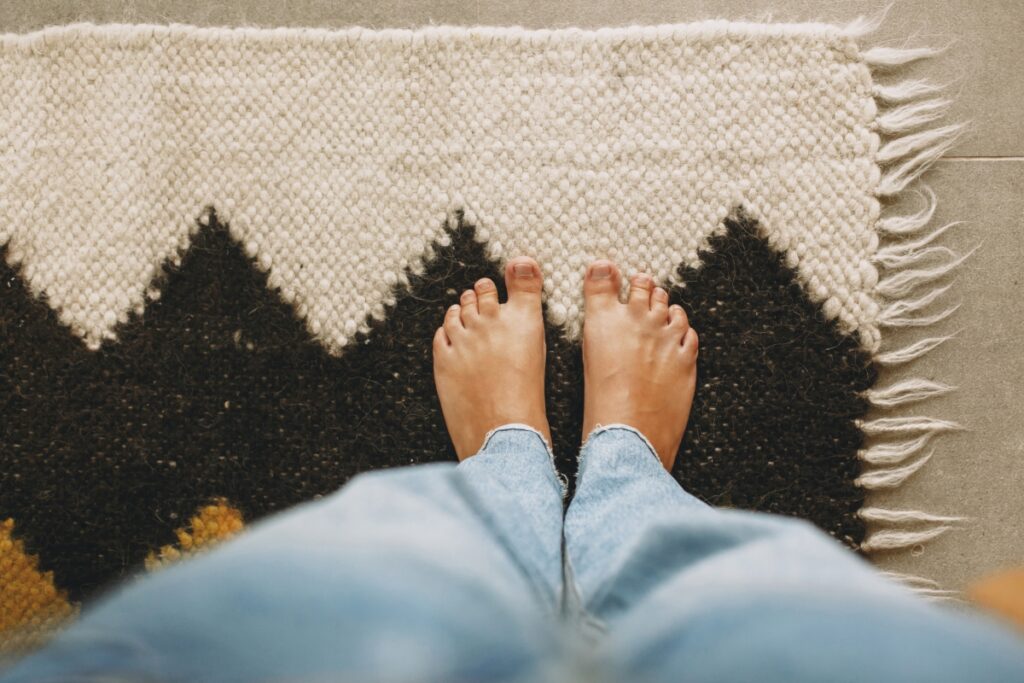
Wool is one of the most famous rug materials and is needed for the ability to bring warmth and home comfort to a carpet made of wool. Fur eco-friendly and sustainable, it is harvested from sheep in the summer and grows naturally year after year.
Out of different types of rugs, wool rugs are the most durable ones. These rugs may last up to 100 years or more. The fibers are remarkably durable and retain their shape when stretched. They are stained and water-resistant, gratitude to the natural lanolin that overlays the surface of the fibers. In addition, the fire-retardant properties of wool make it safe to use at home. Overall, wool rugs decorate a room and are an excellent floor covering that is soft to walk on and sit on.
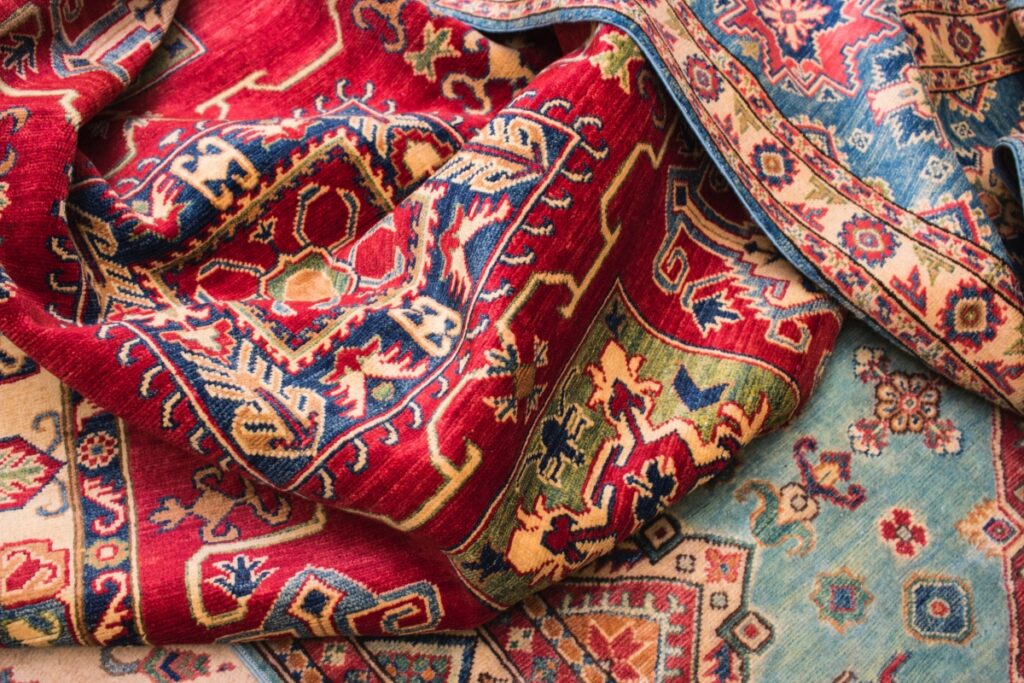
No doubt, luxurious types of rugs are silk rugs. The smooth texture and elegant brilliance of silk make it ideal for creating works of art and intricate decorative items. Less dense than wool, silk rugs require more than an inch of knitting and take longer to complete. Silk rugs are known for displaying intricate patterns, and as the natural fibers retain dyes well, the colors fade beautifully as the rug ages. Silk has been the main material for crafting Persian rugs and Oriental rugs since ancient times.
However, when we compare silk rugs with other types, mainly wool rugs, silk rugs have extremely low durability. They are incredibly delicate and can quickly lose their shape if mishandled or stored poorly. It is not surprising that silk rugs are a significant investment at great prices if you are shopping for a carpet. They also require specialised professional cleaning and maintenance, which increases costs. In your study, it is best to keep a silk rug or display it as a wall expression that does not fit into congested areas.
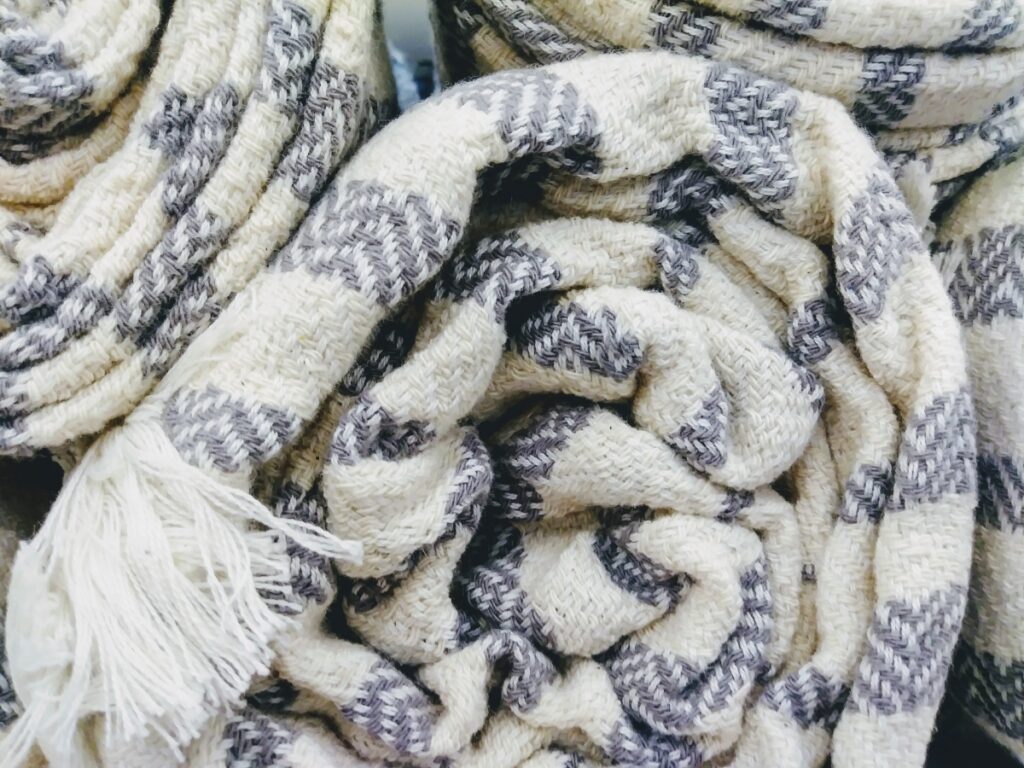
Cotton rugs are incredible in kitchens, bedrooms, dining rooms and halls. They are the most versatile rugs that come in countless variations, weaves, colors and designs. As the most affordable rug to buy, they make it easy for you to instantly transform the look of any room without breaking the bank.
Cotton rugs are also a practical option if you are looking for low maintenance and easy to clean carpet. All they need is a regular vacuum, and they are machine washable. Depending on how you handle the care of it, you can expect your cotton rug to last for years; however, it will show wear much faster than a rug made of a more elastic material such as wool.
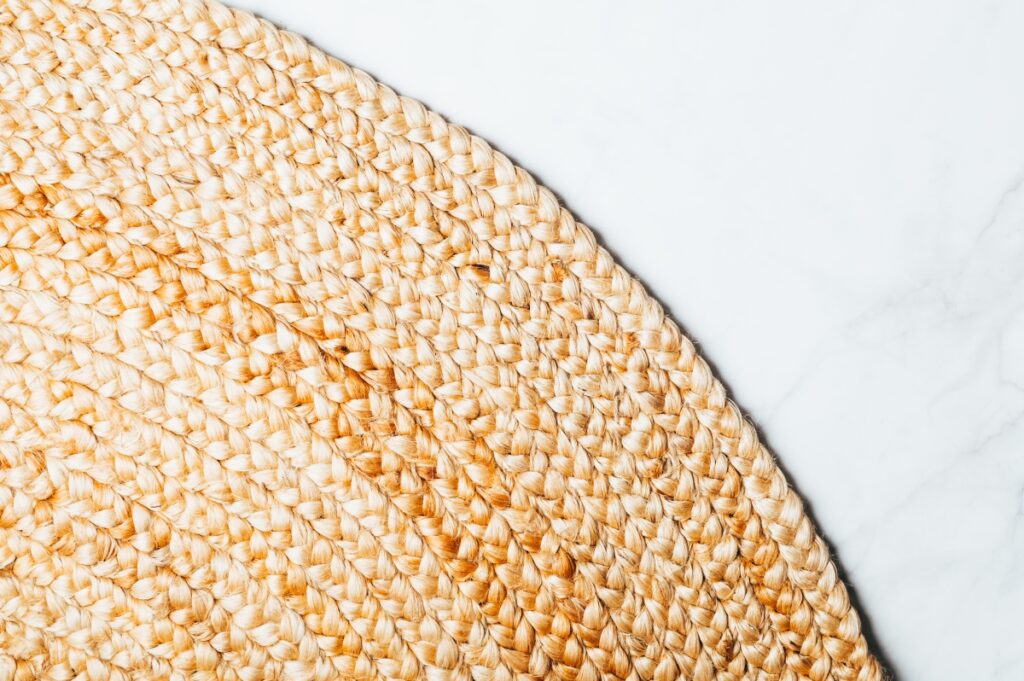
Sounds a little weird all of a sudden? But they really exist. In this rug world which brings you different types of rugs with the times, grass rugs are one of the ancient ones. You can leave it. Okay, don’t care. But there is something you can not forget, something you can not ignore. You must admit that Natural Grass rugs are the most durable and the most beautiful types so far. They are animal-friendly, environmentally friendly, as well as floor friendly. So, they are a sustainable choice.
Fast-growing plant fibres are the raw materials for these rug productions. Also, some famous alternatives like jute, bamboo, sisal, seagrass, and hemp are better. The users may love their impressive warm, neutral look. The grass carpet delivers the rooms with a rustic, casual style. By design, they work well in any room with heavy foot traffic.
You should be aware of liquid leaks to prevent permanent stains as the material tends to absorb leaks. The disadvantage of grass carpets is that they can be rough and provide small cushions, so they are not appropriate for seating for long periods.
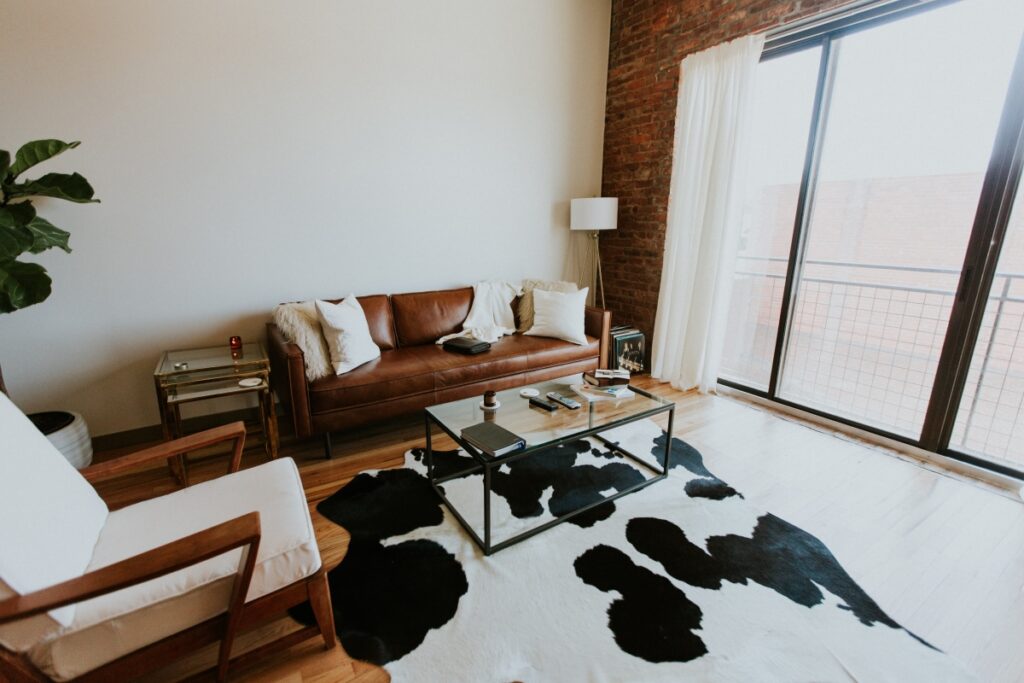
Sometimes animal hides that are used to make rugs are a by-product of the worldwide food industry. Sheepskin rugs, cowhide rugs, exotic rugs, and Reindeer rugs are the most popular animal hide rugs. Let’s see in-detailed facts about them separately.
Brazilian tanners use conventional methods to treat and soften cowhides, resulting in beautiful, flexible, long-lasting rugs without any shedding or odour. Make your room cosy with our cowhide rugs suitable for use as wall hangings. There are different types of Cowhide rugs. For instance, Black and White Cowhide rug, Speckled Cowhide rug, Calf Skin Cow rugs, and many more. However, most of these are ideal for both minimalist and modern home decors. Cowhide exudes a monochromatic chic and boldly makes a great statement when family and friends visit.
Today, interior designers have a wave of vision that favours combining functionality and aesthetic appeal in more than one. Sheepskin rugs are different from other carpets on the market in terms of their texture because of the furry feel that makes them feel comfortable. Stepping on sheepskin rugs proves to be convincing, and many say that the look and feel are similar to stepping on clouds. Sheepskin rugs never go out of style – they add a touch of elegance to a bedroom or addition to a living room or hall. Suitable for use as rugs, throwing or hanging, high-quality sheepskin rugs are sustainably obtained worldwide.
Add an extraordinary touch to your home with stunning exotic hidden rugs, including beautifully smooth goat leather, luxurious soft blush and stunning Springbok. Perfect even for the most compact room, exotic hides come in a variety of sizes and colors, bringing a warm and inviting style to any interior.
A popular one among alternative types of rugs. This Reindeer Rug is an excellent alternative to cowhide rugs. If you cannot afford a Cowhide rug or if it is not available, a Reindeer rug will be a great choice. Some people settle for Reindeer Rugs because they need a different design to complement their favourite animal skin. Resistance to stiffness and staining causes cowhides to be at the top of the carpet charts. If you’ve settled for a Reindeer rug as a last resort, do not think that you will not enjoy the full benefits of any other rug you like. Of course, be proud of your Reindeer rugs as many benefits are often overlooked over alternative animal skin rugs.
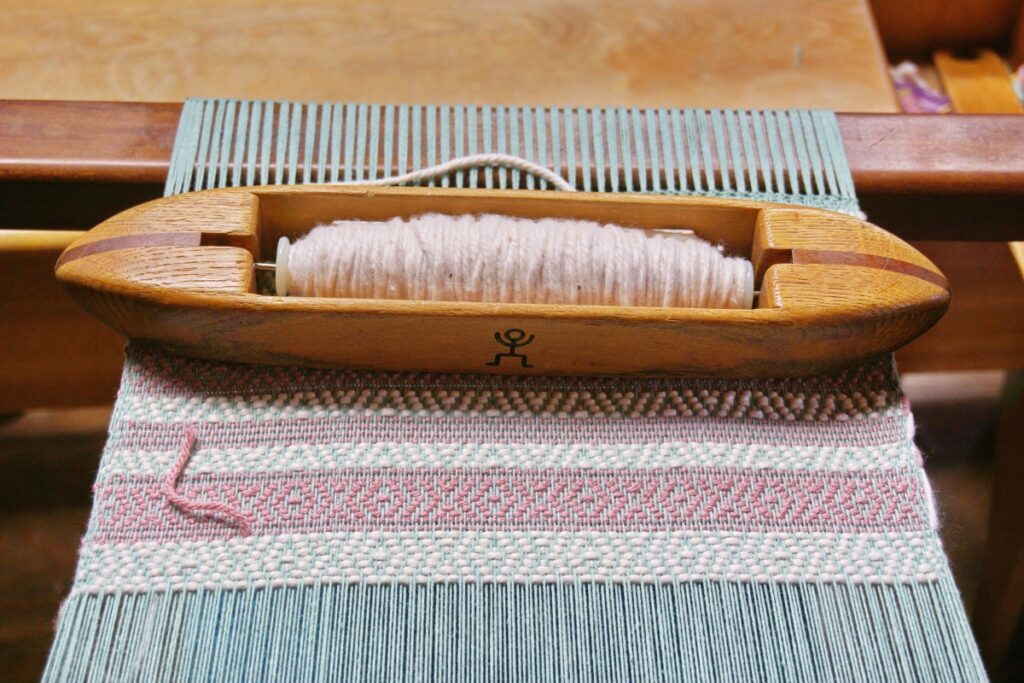
In the past, every rug was hand-knotted by skilled artists. and gradually people invented different techniques according to the resources they have and the inherited culture. Often, carpet weaving differs in style. But you may not know what rug-making method is used for a particular carpet product. Here are the basic ways of rug making in the modern world.
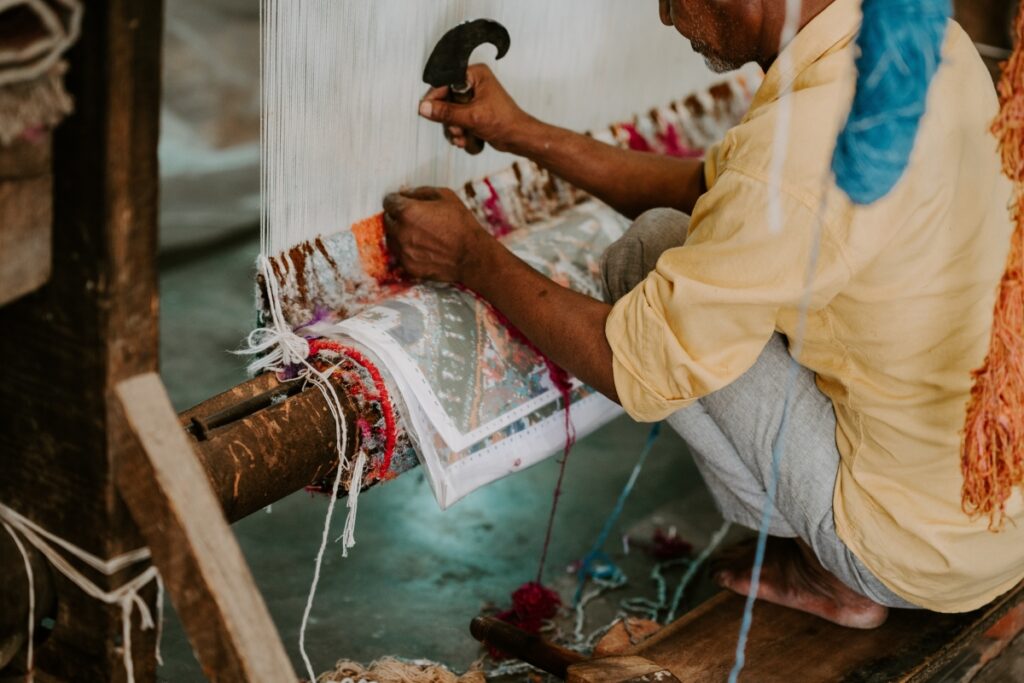
Hand-knotting is the slowest and most expensive method of carpet making. It is one of the oldest methods of making carpets and is more than 2000 years old. It can take months to years to make a rug using this technique. A specially designed machine for hand tying is required. The manufacturing process involves tying the vertical threads or warp to the fabric and then tying them with the horizontal threads. Craftsmen begin to tie around the knitting and continue to make the entire carpet. Patterns are made on rugs by various tying techniques. Persian and Tibetan styles are the two main knot designs.
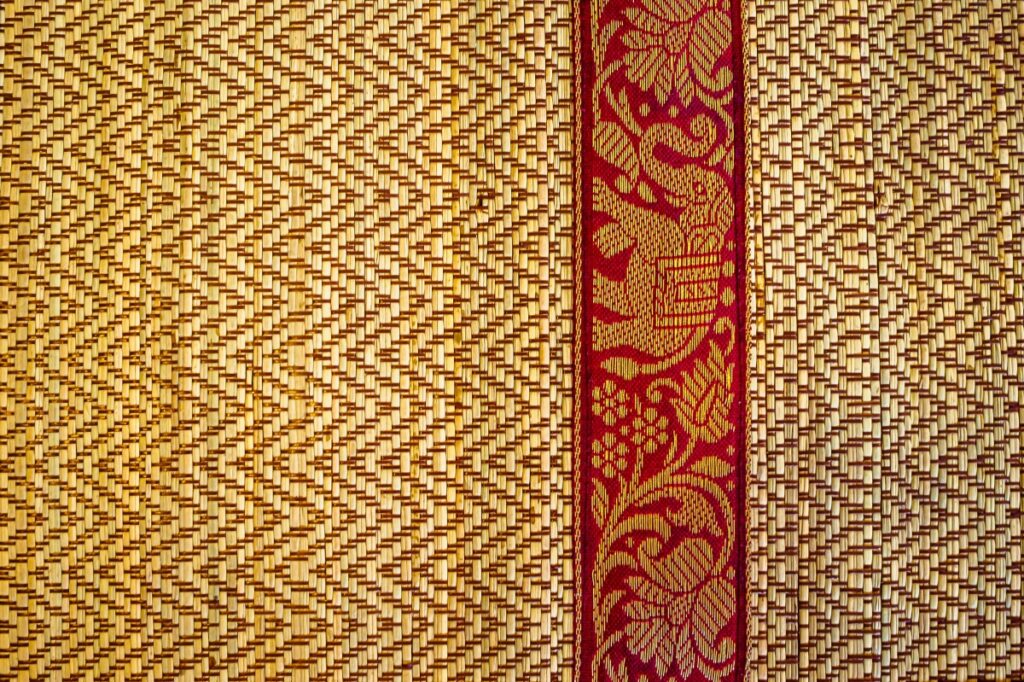
On the loom frame, the threads are stretched. The desired pattern is stencilled on the surface of this thread. The weaver uses a tool with a hook-shaped needle. Pull the thread to create loops on the Artisan frame. This creates a pattern on the carpet. A series of such looped structures complete the carpet piles. The final touch to the carpet is provided by the addition of a backing.
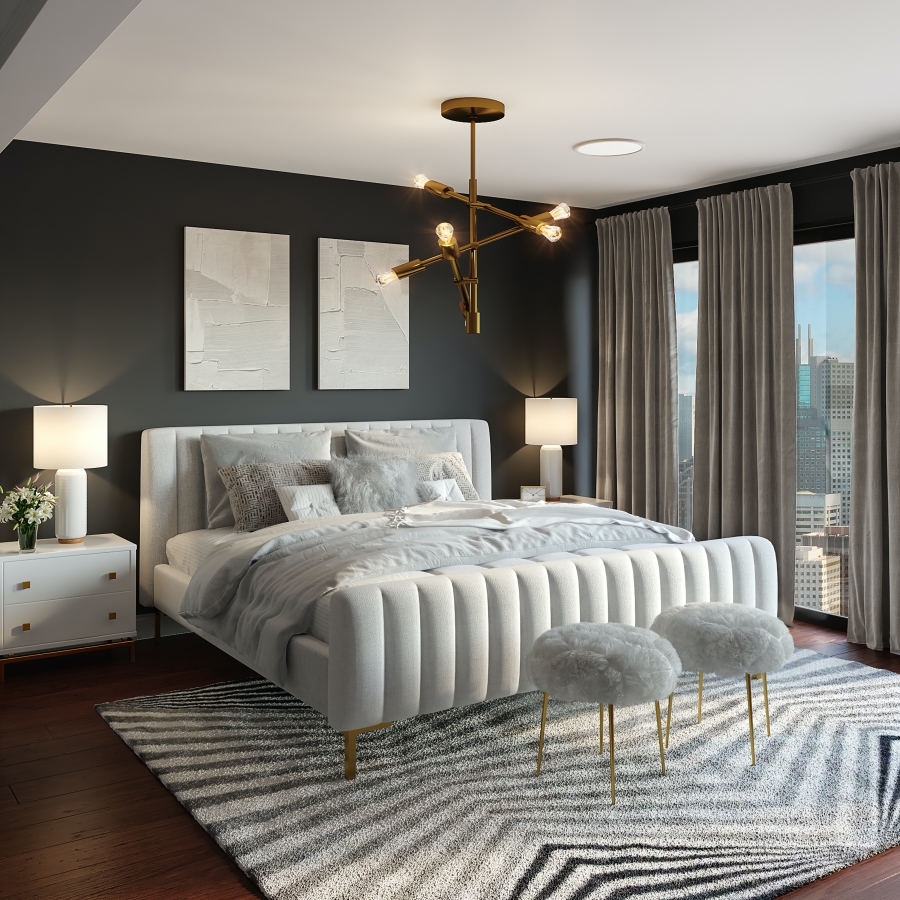
Once the artist has stretched the thread on the frame, he or she uses a gun-shaped tufting tool to tie hooks around the rows of thread. These carpets have piles of cuts. These look good and are durable. The rug frame tufts can also be drawn with a needle tool. Cutting and edging are the final touches to the carpet.
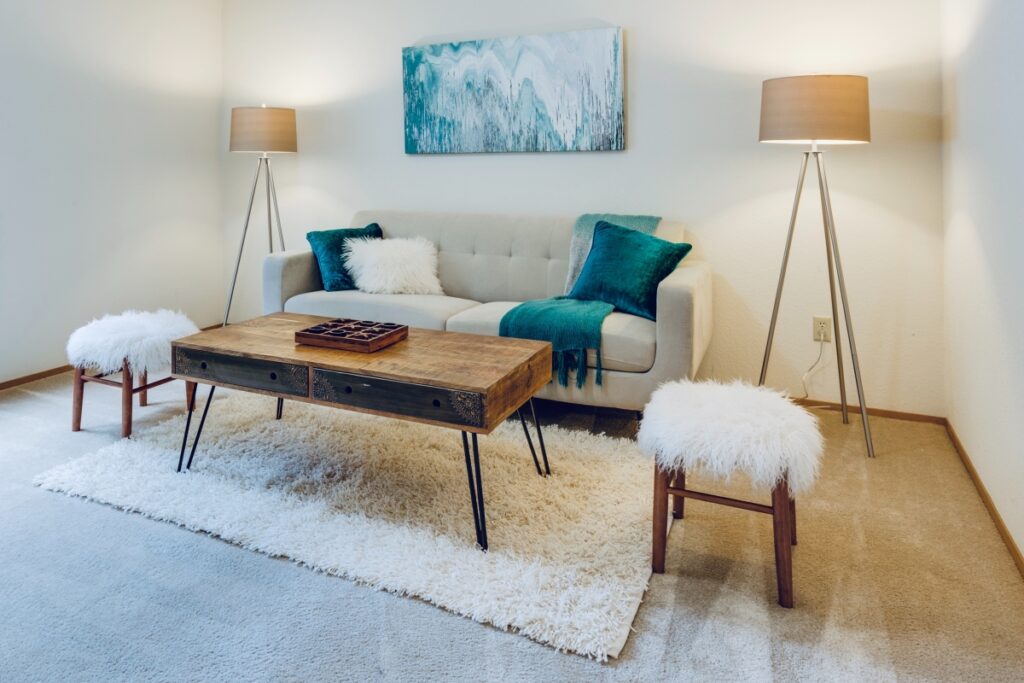
Among the different types of rugs according to their production method, loomed rugs are one of the coziest parts. They provide an extra-ordinary comfort to your feet . However, they are machine-made. Modern loomed carpets can be made entirely by machinery. This means that craftsmen do not have to make knots, tufts or hooks on the frame by hand. The thread frame is stretched over the fabric. To make these carpets, the technician only has to mechanically operate a needle and tools.
Color, texture, type. Things to always consider when buying your carpet. But if you roll it, you’ll find something else substantial – backing up. So what is carpet backing? The underside of a rug is also known as the backing. It protects the tufts and gives the carpet extra strength and dimensional stability as well as there are so many advantages of rugs with rubber backing. Let’s discuss everything about them before buying a carpet next time. Not all rugs and carpet have a rubber backing. By adding a pad to pieces without you are adding this feature for comfort and protection.
Most carpets have dual backing.
You will also hear the term “unitary backing”, a heavy coating applied directly to the back of the carpet without using a secondary backing.
Depending on the performance requirements, carpet backing can be made from various materials (jute, polypropylene, rubber, etc.). Several additional treatments can be applied, including anti-stain, anti-microbial anti-static. Performance becomes more and more important when you analyze the type of environment in which the carpet is installed.
Consider the level of traffic the product meets your performance expectations, whether wear and tear is a factor and if moisture resistance and stain resistance are essential. Carpet backing is generally available in three types: standard, performance and high performance.
This is the lowest level and is often used on carpets for residential applications. These backed products can be used commercially, but wrinkling or binding is possible if used in congested areas. This backup cannot be used in overcrowded commercial facilities.
Usually made from natural jute fibres or artificial polypropylene (it is a synthetic thermoplastic resin)
This backing represents a high level of backing and provides more excellent dimensional stability and strength than standard backing. It is designed for commercial environments.
This backing is generally unitary. It is designed to provide long-lasting durability and helps protect carpets from stains, leaks and moisture. This support is requested for commercial environments.
The material that sticks to the back of a rug is called the rug backing. In the rugs with rubber backing, this material is rubber. The material of the back of a rug is important for several reasons. The carpet should breathe to help air and moisture pass through the rug. Without proper carpet support, a rug can become susceptible to mildew, mould, and wear, and some rugs can even damage the floor. The most common types of rug support are heat kits, woven, felt and rubber latex.
Rugs with rubber backing are a great solution to any dangers in your home. You can find these rugs in diversified sizes – from small walk-ins to the door to the large living room.
They do not provide much cushioning, and they have a great grip on the floor. Therefore, they eliminate rug movement that can cause them to slip.
Following are the main rugs with rubber backing on the market:
Discover the difference between natural, synthetic and latex rugs with rubber backing, and look at how different rubber-backed carpets are made. Finally, let’s find out how this pairs with different types of flats. So, you can choose the perfect rubber backing next time.
Carpets with natural rubber backing are made from 100% organic rubber latex extracted from rubber trees.
The main feature of natural rubber is its tensile strength – its capability to stretch. Organic rubber has higher tensile strength than its rubber latex or synthetic counterparts.
Moreover, it passes naturally (albeit faster than synthetic rubber) without releasing harmful toxins.
The quality of breathing air in your home is free from harmful toxins. Organic rubber-backed rugs are eco-friendly and do not emit gases – unlike synthetic or rubber latex rugs.
It is safe for the floor. It does not contain chemicals that react with your floor to cause stains or scratches, and natural rubber absorbs the floor instead of sticking to it. Therefore, when you remove the rug from the area, it will not tear the floor surface.
A rug with a synthetic rubber backing is made of natural rubber treated with a chemical.
PVC (Polyvinyl Chloride) is one of the binding chemicals used in manufacturing.
Has high resistance to wear, oxygen exposure and high-temperature conditions.
Available in more versatile options compared to natural rubber. You can find it in different colors and types.
However, synthetic rubber-backed carpets have some disadvantages – the use of chemicals in the bonding process is linked to:
Rubber latex is a synthetic liquid form of rubber classified as a polymer. A polymer is a product that can return to its original shape after elongation.
The main difference between latex and natural rubber is their source. Natural rubber is gathered from the rubber tree alone, and rubber latex produces rubber latex from about 20,000 species.
A rug with a rubber latex support is non-slip and water-resistant. Thus, it catches the ground and prevents water damage.
Rugs with synthetic rubber backing are not suitable for your expensive floors. But natural rubber is a safer option.
With rubber-backed rugs on solid wood floors, rug pads can guarantee you a long service life. This is because natural rubber pads can withstand high temperatures without wrinkles.
Your feet are happy with the comfort. The back of the latex rug is soft and comfortable on the feet. Also, because of their softness, they are perfect for a variety of rugs and yarns.
With every carpet support, the rubber latex backing ensures that your wooden floor is safe and protected from scratches.
Further, rubber latex mats do not stain quickly. Rubber does not retain stains and is water-resistant. So, if you still have small children, you are sure that they will leak water and cause stains around the house.
A wooden floor is slippery and can sometimes be a problem when laying a carpet. With a large tufted-binding rug, the threads are woven close together intricately, ensuring that this carpet holds firmly to the floor.
Large rugs are awesome. If they are drivers, they look great. But be sure not to buy mats with very large rubber backs. Larger rubber-backed carpets require more rubber pads for proper insulation. Obtaining a rubber pad is an additional expense for you.
For those who like to stick their rugs to the floor, check that the glue under the back of the carpet holds up properly and for a long time. If you get a rug with thin rubber support, you will often have to remove the carpet when the foot traffic increases.
Your carpet will sometimes get stains that you can not clean on the spot. You need to take the carpet out to clean it. Find out if you can take out carpets that are not too heavy quickly or call a professional who can come clean it at your house.
Carpet is a fabric floor covering a top layer attached to the back. Also, a rug may be any decorative cloth customarily made with a thick material. Until the 19th century, the term carpet was used for any covering, such as tablecloths or wall hangings. But when it comes to the usage and the production history of rugs commonly, since the introduction of machine-made products, it has only been used for floor coverings.
Piles usually consist of deformed tufts typically heat-treated to maintain their structure. The term ‘Carpet” or “rug” is utilised worldwide to introduce these piles. The words carpet and Rug are often interchangeable. Literary carpets are floor coverings not explicitly attached to the floor to make it clearer. This non-slip fabric is used as a floor covering that does not entirely cover the bottom.
People have been making carpets out of every possible material. The ancient tribes wove reeds and grass together to make primitive rugs and keep the cold ground warm.
According to excavations, the oldest hand-tied eastern carpet today came from the region of Iran and is roughly the same. 2,500 years old. The Rug density was more than 300,000 knots per square meter, and therefore the knot density of most modern handmade carpets. Hand-knitted rugs are said to have originated from travelling tribespeople who made wool into the first flat woven fabric 500 years before Christ.
When we talk about the history of rugs, there are things that we must talk about in advance. 5,000 years ago, nomadic tribe members weaved rugs from camel, sheep, and goat hair. Archaeologists have unearthed evidence of carpets dating back more than 4,000 years in Egyptian and Mesopotamian tombs.
The oldest carpet that exists today is the pazyryk carpet, which dates back to 500 BC. It was discovered in 1949 in Siberia. Despite its age, the carpet was a testament to highly advanced and sophisticated technology with rich colour fibres only if they had professional carpet cleaners to keep Pazyryk carpets sharp.
Concerning the history of rugs and carpets, it is not surprising that this history is as old as man. People have an instinct to seek comfort and harmony. Man has always wanted to create a comfortable environment. Whatever is said about cave people or modern people, nature is still the same. Men living in caves have been found to have a warming effect on cold days by using carpets or rugs and animal fur to cover themselves.
They have traditionally been made of wool, but since the 20th century, fibres have become less expensive than wool, so synthetic fibres such as polypropylene, nylon or polyester are often used. However, a considerable differentiation happened throughout the history of rugs. Let’s discuss them clearly under the evolution of rugs.
Man on this planet is constantly evolving. In terms of carpets and the history of rugs, centuries ago, it was the custom of the tribal people to make carpets from weeds and long grass to make the oldest carpets, which are only the primary structure for keeping the earth warm in the cold days.
5000 years ago, the nomadic tribes used animal skins to make the ancient rugs. Travellers use hand-knitting techniques to create camel, sheep, and goat wool rugs. In addition, dynamic carpets were used in old gardens. Archaeologists’ extensive research has revealed that rugs were ordinary in Egypt and Mesopotamia as early as 4,000 years ago.
However, different parts of the world have contributed to the evolution in many ways. As a result, there can found a vast diversity among the rugs coming from the different countries. The reason is the evolution scheme and the traditions and culture of them.
Although the precise account of rug making isn’t located everywhere in historical documents, the fabric fragments courting lower back to numerous thousand years had been observed throughout the Asian continent, which verified that the primary cloth ground coverings originated in Asia. However, it became Egypt credited for beginning the rug technology in around 3000 B.C.—after that, enhancements in weaving and designs were central to the evolution of rug technology.
In the history of rugs, the earliest acknowledged material was made with a pile. It became named as Pazyryk rug, which had pile fabric fabricated from substances that consisted of everyday weave’s backing with more threads knotted to shape a raised surface.
India witnessed the beginning of weaving pile rugs someplace earlier than the twelfth century A.D., and shortly it unfolded to the Eastern part of the globe. The pile fabric knotted via way of hand got here up in the Orient (now Sri Lanka). These rugs reached Europe around 1200 AD through crusaders visiting the Middle East.
The thirteenth century witnessed the making of hand-knotted rugs in Europe via way of means by the Arabs of southern Spain. The procedure of Rugs became pretty widespread because the Moors who conquered France had reportedly set up many rug factories there.
Throughout the history of rugs in the 14th and fifteenth centuries, rug making became a thriving retail business in Persia. The commercial enterprise touched new heights in16th century. Rich colourings and styles got here up in Isfahan, which has become Persia’s centre of rug enterprise. These rugs and rugs made in Turkey are imported to Western Europe.
The procedure of rug making entered England in 1500 under the guideline of thumb of King Henry IV. During his tenure from 1553 to 1610, a set of Persian weavers left Ishahan and went to Paris to Louvre Palace. It became around 1700 while England became a centre of European Rug and carpet enterprise. The electricity loom became advanced in 1780 right here.
A carpet enterprise got here up in France in 1628. The region of this manufacturing facility even though became a former cleaning soap manufacturing facility located at Chaillot, France. Here French weavers learnt the artwork of making colourful coloured rugs on stunning motifs. Tapestry rugs have been superbly crafted in a small city in primary France, referred to as Aubusson. Since then, it has grown to be the carpet’s alternate name. Later, Brussels emerged as a vital middle of tapestry withinside the sixteenth century. Later, it became one of the foremost reasserts of ground tapestries via way of the 18th century.
Flat-woven fabric desired in the nineteenth century: Flat-woven material was chosen in rug making within the nineteenth century withinside the West because it became pretty affordable. Eventually, the hand-knotted rugs, which have been steeply-priced, couldn’t have been afforded via way of means of all segments. However, its call for endured hovering withinside the nineteenth century as correctly and that they have been desired as ground overlaying in rooms. English, Italian, and French fixtures have mainly been used as ground overlaying.
The twentieth-century technology witnessed system-made rugs in the shade otherwise in usual styles. This style has become less complicated for decorators to merge one carpet shade right into a room scheme. It became right here that the call for ambitious and complex designs went low.
The technology of 1950 noticed the approach of the tufting system in carpeting. Initially, the U.S. has become a hub of tufted rugs and carpets but eventually unfolded to different sector elements properly. Presently, rugs are available in various patterns and are made up via means of multiple strategies. As the floors sorts of the homes are changing, so are carpet patterns changing. Wood, laminate, stone, marble and tiles in our rooms and workplaces are adorned with various rugs, both hand-knotted or hand-tufted. They arrive in numerous sizes and styles to match the countless wishes and readorning sorts of consumers.
In the history of rugs and the modern market, we can find attractive ones made according to their cultures. It takes loads of knowledge and ability to weave a carpet with even thickness, and the real Persian rug records lie withinside the reality that it’s been handed on from one era to another on account of the 2500 years of vintage records of Persians.
These rugs have been traditionally hand-woven from wool; they emerged from France within the fifteenth century. They are now regularly crafted from cheaper artificial equipment without dropping consistency or longevity. In the U.S., the primary carpet making turned into completed in 1971. but withinside the West, as much as in the nineteenth-century maximum famous and widespread ground covers are designed using the flat woven fabric.
A rug can quickly transform any room. They transform the look and mood of a room. They also have several practical benefits – from heating your home to reducing noise. Nowadays, homes do not have carpets, so many people moving into a new home consider buying rugs for the living room. If you are trying to resolve whether to buy one or two rugs for your place, it is easy to think it is a simple decoration matter.
A few pieces are more versatile than carpet when it comes to home decor. It is fully adaptable and can enhance the style and hide flaws in a single charm. Of course, our firm belief is that everyone should have at least one carpet, and we will tell you why.
There are many reasons why a rug is more significant as a multi-tasker in your life while adding decor to your home with an affordable budget. A rug is handy in a home as it helps make switches in your floors. We can see an undimmed and eye-catching essence in a chamber with dark walls and furniture by adding light-coloured rugs.
Actually, it creates a theme by using your favourite rug, colour and style and simply different rugs. Do your flooring style change with a new taste, including your choice. Really, it gives your home a fantastic outlook. You can do it by its colour, design, material and shape. Not only do all of these provide a new essence for your flooring but also to your whole home. You can enhance the decor and tie up your room with a fascinating look.
Moreover, when using rugs in flooring, the cleaning is less struggle. Rugs are easy to clean and also in regular vacuuming. Your feet may feel more comfortable because of the comforting rugs, and also, the living rooms and other rugs used in rooms can be warm because of the softness of these rugs. Besides that, rugs perform as the most incredible air filter in a house. They reinforce indoor cool or the air quality by capturing the unusual dust particles in the air. Frankly, rugs are significant enough to fabricate a comfortable and fascinating feel.
Impress the Guests
Call it a vestibule, an entrance hall, an entrance hall, but whatever you call it. It is the space between the great outdoors and your well thought out home, and it is not always easy to style. This can be especially true for carpets, as you should consider the natural element and the style of your home and combine both and flavour.
Because, if you think so, yes, when someone comes through your door, there will be mud on their shoes. Yes, a child can squeeze a little ice cream out of his cone when he goes out. Yes, someone’s wet footprints walk across the carpet as she runs inside to snatch her forgotten wallet.
Protection and Safety
Furthermore, rugs increase safety in your house. As a great example, a little one falls while practising their first step or walking skills. Actually, rugs provide perfect protection without slips and falls. They minimize injuries. Noise reduction is one of the specific significance of rug usage. It’s a practical use as the rugs have the ability to absorb the sounds in the surrounding.
Noise Reduction
If there are echo sounds, voices and sounds of footsteps on hardwood and tiled floors, the rugs reduce and soak up the unnecessary noises. If there are damaged, cracked floors, the rugs are the solution. Cracked tiles and damaged hardwood floors can be covered up with rugs. So you can cover the imperfections in your room.
Management Heat
Lay a rug on a wooden floor, and then you will instantly increase the warmth and comfort of a room. Add a rug next to the bed, giving you a cushioned layer and softness to step on first thing in the morning. Solid wood floors are not only underfoot in winter; They do not help to retain any heat. Lay a rug on your floor during the colder months to help keep the whole house warm.
In addition to being soft, rugs are warmer than hard surfaces. It has a great insulation value, especially if it has pads under the carpet. This applies throughout the house but is especially acceptable on the ground floor, where the floor can be very cold.
Especially if you have solid surface floors such as solid wood, concrete or tile, you can appreciate the Kush relief rugs you bring into your space.
Durability is a priority concern.
The living room floor is more congested than the rest of the house. Not to mention the collection of spilt food, dirty shoes and dust. The top priority is durability above all else. Good quality and durable rug can cost a little more, but in the long run, it is still cheap. In a living room, you will need something that can withstand casual wear.
Don’t choose too small.
Do not choose too small carpets for space. In every area, a large rug can be the difference between pulling your space together – or not. Always be big; It is worth any extra expense. Let room orientation be your guide when deciding how to run a rug. In a long room, it is best to place a long rug. The use of paint strips is a pro tip to help mark your carpet’s final look and ensure that the carpet is in the correct position from every angle.
Pick a colour
Do not choose black or white rugs for your living room. Of course, choosing a rug colour is entirely a personal preference. However, especially if you have a young family or pet, consider avoiding black or white carpets altogether in areas with heavy traffic. Include maintenance as part of your selection criteria to spend more time enjoying your rug and less time vacuuming it. These carpets can look very beautiful even in other quiet areas.
Try to make it soundproof.
Consider your neighbours. If you live in an apartment complex, carpets can be an excellent sound insulator, especially for busy areas such as the living room. A tactfully placed rug absorbs sound, and every step you take will stop your neighbours from listening and soaking in their noise.
Whether it uses a beautiful flat texture, a kiln drive or a striped finish, the designers continue to prove that rugs for the living room are not just valuable pieces. When paired with a minimalist design in general, a rug boasts a colourful, patterned design that can bring out the accent colours in the background and add playfulness.
With numerous rugs coming in an infinite variety of patterns, designs, colours, materials and sizes, choosing the right one can be difficult. To reduce stress, we have put together a collection of living room rug ideas that will encourage and assist you find the rug of your dreams.
Co-ordinate with the furniture
With a dramatic rug, your other furniture can be a bit simpler, and you may want to get the colours from the rug on cushions, curtains or other accessories.
Alternatively, if you already have your furniture, you may want to add a coordinating or neutral rug to complete the room, perhaps choosing a texture or silk finish that invites an extra-luxurious note.
Decorate with a pattern
When selecting rugs for the living room, consider the pattern for sure. Each pattern has a unique character and when using them, consider this – Damascus has a more classic feel and imagery.
But if in doubt, adhere to a neutral colour scheme. Team pattern with neutral living room ideas for a modern farm style that is warm, cosy and structured.
Try a Blue or Purple rug
A deep blue carpet is a secret to transforming your room, as it creates a ‘whole world of drama and influence’ throughout the space.
The colour creates a vibrant, joyful atmosphere, making it ideal for lively, social spaces. Adding dark ground can add depth to a large space and make it feel more intimate.
Stripes add a rich look
The stripe brings order and structure to space and has the capacity to divert the eye. When integrated into an internal scheme, they infiltrate a dose of underestimated elegance and sophistication.
Striped carpet against a simple background in another way is a powerful tool in interior architecture – it has the effect of shifting the eye and rearranging the space. The smart bar – whether wide or narrow – is a classic pattern that visually lengthens and expands a room like floorboards.
On-Trend designs are better
Timely designs are perfect for the rugs for the living room. They improve the house decoration more than old designs and modern styles. Timely and on-trend designs can be with any sort of rug around the world. Scallop-edging is a cosmetic trend that we do not have adequate access to. The shift towards soft, shaped edges is constantly evolving in interior design with the trend for skull and sea-inspired furniture emerging through our living space. The undulating curves of the design create not only a stylish look but also a romantic silhouette
